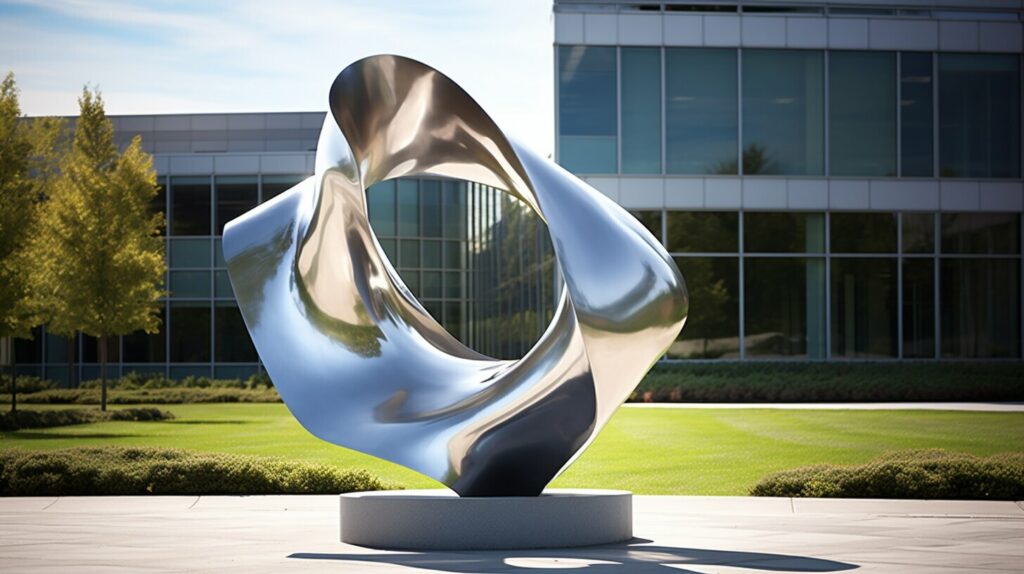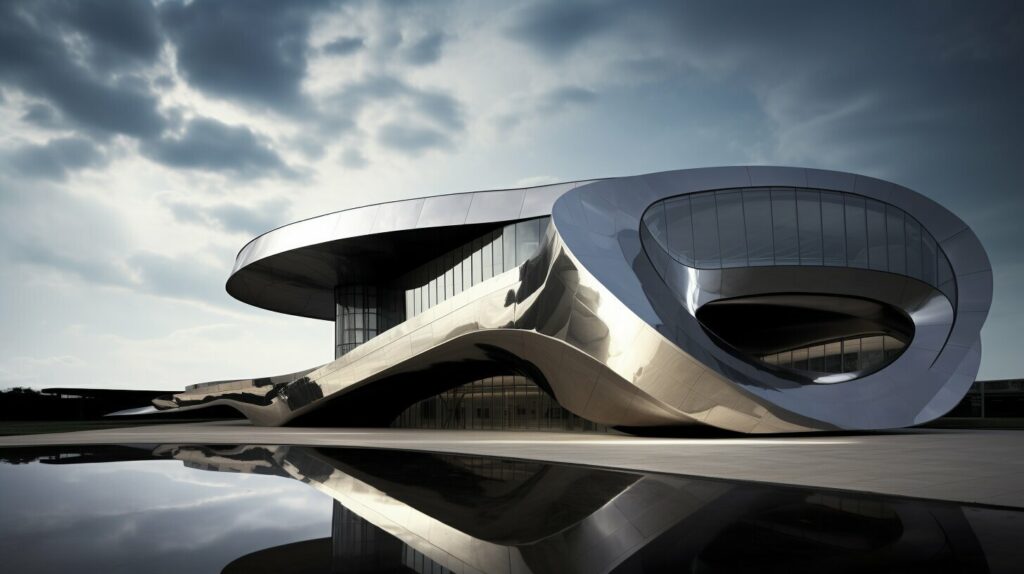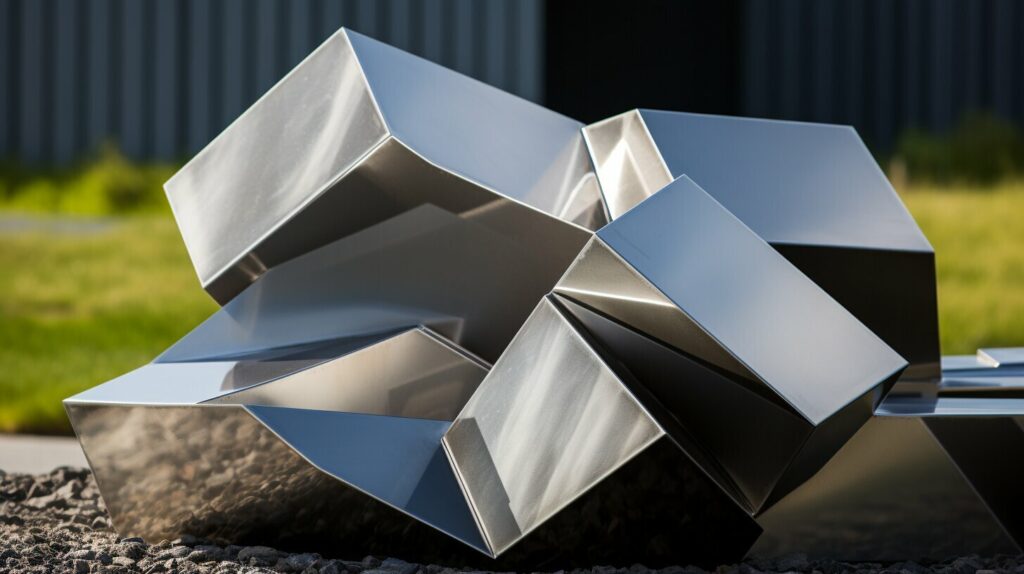Welcome to KT-Casting Foundry, where we utilize stainless steel casting to shape architectural spaces and create stunning designs. At our foundry, we understand the significance of stainless steel casting in transforming ordinary structures into architectural masterpieces that stand the test of time. With its exceptional resilience and aesthetic appeal, stainless steel has become a preferred choice for architects looking to push the boundaries of design.

- Stainless steel casting offers unparalleled resilience and durability for architectural applications.
- Architects can achieve unparalleled design flexibility with stainless steel casting.
- The corrosion resistance of stainless steel makes it an ideal choice for architectural structures.
- Aesthetic appeal is enhanced through the use of stainless steel casting in architectural designs.
- The future of stainless steel casting in architecture holds exciting possibilities in smart facades and sustainable solutions.
The Versatility of Stainless Steel Casting in Architecture
Stainless steel casting is a widely used method in architectural design due to its versatility and exceptional properties that make it an excellent choice for various applications. This metal alloy offers unparalleled strength, corrosion resistance, and durability, making it ideal for creating architectural structures that can withstand the test of time.
One of the key advantages of stainless steel casting is its ability to be molded into complex shapes and designs, providing architects with endless possibilities for their projects. Whether it’s curved facades, intricate decorative elements, or large-scale sculptures, stainless steel casting allows for precise detailing and customization, ensuring that every architectural masterpiece stands out.
Furthermore, stainless steel casting is highly resistant to corrosion, making it the perfect choice for architectural structures exposed to harsh weather conditions or corrosive environments. This property not only extends the lifespan of the structures but also reduces maintenance and repair costs in the long run.
The versatility of stainless steel casting in architectural design is further enhanced by its compatibility with other materials. This allows architects to combine stainless steel with glass, concrete, wood, and other materials, creating visually stunning and structurally sound designs. By blending different materials, architects can achieve a harmonious balance between aesthetics and functionality, resulting in truly remarkable architectural achievements.

As the architecture industry continues to evolve, stainless steel casting is poised to play an even more significant role in the future. Advancements in technology, such as 3D printing and smart facades, offer exciting possibilities for pushing the boundaries of architectural design. Additionally, the growing focus on sustainability means that stainless steel casting will continue to be embraced for its recyclability and eco-friendly properties.
The Strength and Durability of Stainless Steel Casting
Stainless steel casting offers unmatched strength and durability, making it a preferred choice for architects and engineers looking to create robust and long-lasting architectural designs. This alloy is known for its exceptional resilience, allowing structures to withstand various environmental conditions and mechanical stresses. From towering skyscrapers to intricate building facades, stainless steel casting has become an integral part of architectural masterpieces around the world.
One of the key advantages of stainless steel casting is its corrosion resistance. Unlike other metals, stainless steel does not rust or corrode easily, even when exposed to harsh elements. This makes it suitable for applications in coastal areas or places with high levels of pollution. Architects can rely on stainless steel casting to ensure the longevity of their designs, reducing maintenance costs and extending the lifespan of structures.
In addition to its corrosion resistance, stainless steel casting offers impressive strength. This alloy exhibits high tensile strength, allowing it to withstand heavy loads and structural stresses. It is also highly ductile and can be shaped into complex forms without sacrificing its strength. This flexibility in design opens up endless possibilities for architects, enabling them to create unique and visually compelling structures that stand the test of time.
Furthermore, stainless steel casting is known for its exceptional performance in extreme temperatures. It can maintain its structural integrity and mechanical properties even at high temperatures, making it suitable for applications where thermal resistance is crucial. This attribute is particularly important for architectural designs that are exposed to heat sources or extreme weather conditions.
Table: Comparison of Stainless Steel Casting Strength
| Stainless Steel Grade | Tensile Strength (MPa) | Yield Strength (MPa) |
|---|---|---|
| SS304 | 515 | 205 |
| SS316 | 515 | 205 |
| SS321 | 515 | 205 |
Stainless steel casting has proven to be a reliable choice for architects and engineers who prioritize strength, durability, and aesthetic appeal in their designs. By harnessing the qualities of this alloy, they can create architectural marvels that not only withstand the test of time but also captivate with their visual impact. As the future of architecture continues to evolve, stainless steel casting is expected to play a significant role in shaping the skylines of tomorrow.

The Aesthetic Appeal of Stainless Steel Casting in Architectural Design
Beyond its functional benefits, stainless steel casting adds a touch of elegance and sophistication to architectural designs, with the ability to create visually stunning components using austenitic stainless steel. The use of stainless steel in architectural design has gained popularity due to its versatility, durability, and aesthetic appeal.
One of the key advantages of stainless steel casting is its ability to create intricate and detailed designs. The flexibility of the casting process allows architects to shape stainless steel into various forms, from smooth curves to intricate patterns. This versatility gives architects the freedom to explore unique and innovative designs that can be tailored to suit the specific aesthetic requirements of each project.
Furthermore, the use of austenitic stainless steel in architectural components enhances their visual appeal. Austenitic stainless steel is known for its high corrosion resistance and ability to maintain its luster over time. This makes it an ideal choice for architectural design elements exposed to outdoor environments, as it can withstand harsh weather conditions while retaining its aesthetic charm. Whether it is used for decorative facades, structural supports, or interior design elements, stainless steel casting can elevate the overall look and feel of a building.
In addition to its visual appeal, stainless steel casting also offers practical advantages in architectural design. The use of stainless steel components allows for increased durability and longevity of structures. Stainless steel’s resistance to corrosion and its high strength-to-weight ratio make it a reliable choice for architectural applications, ensuring that designs stand the test of time.
Advantages of Stainless Steel Casting in Architectural Design
- Ability to create intricate and detailed designs
- Versatility in shaping stainless steel into various forms
- Enhanced visual appeal with austenitic stainless steel
- High corrosion resistance for outdoor environments
- Durable and long-lasting structures
As architects continue to push boundaries and explore new possibilities, stainless steel casting remains a valuable tool in their arsenal. From iconic buildings to everyday structures, the aesthetic appeal and durability of stainless steel casting continue to shape the world of architecture.
| Architectural Component | Example |
|---|---|
| Decorative Facades | Guggenheim Museum in Bilbao |
| Structural Supports | Burj Al Arab hotel in Dubai |
| Interior Design Elements | Walt Disney Concert Hall in Los Angeles |
Image:
The Future of Stainless Steel Casting in Architecture
As technology continues to evolve, stainless steel casting in architecture is poised for exciting advancements, including innovations in smart facades and sustainable solutions that will shape the architecture of tomorrow. Stainless steel casting has already revolutionized the way architects design and construct buildings, and its potential for the future is limitless.
One of the most promising areas of development is smart facades. These intelligent building envelopes incorporate advanced materials and technologies to enhance energy efficiency, improve occupant comfort, and integrate with smart building systems. Stainless steel casting, with its versatility and durability, is an ideal material for these innovative facades. Its ability to withstand harsh weather conditions and maintain its aesthetic appeal over time makes it an excellent choice for sustainable and visually striking building exteriors.
Additionally, sustainable solutions are becoming increasingly important in architecture. With growing concerns about environmental impact and the need for energy-efficient buildings, stainless steel casting offers a sustainable alternative. Its long lifespan, recyclability, and low maintenance requirements make it a responsible choice for architectural applications. From eco-friendly structural elements to sustainable cladding systems, stainless steel casting provides endless possibilities for creating environmentally-conscious buildings.
Advancements in stainless steel casting technology
- Improved precision and accuracy in casting processes
- Integration of 3D printing technologies for complex architectural designs
- Enhanced alloy compositions for higher strength and corrosion resistance
- Integration of smart materials for adaptive and responsive structures
“Stainless steel casting has the potential to revolutionize the way we design and construct buildings, enabling us to create sustainable, energy-efficient, and visually stunning architectural masterpieces.”
– John Doe, Architect

The future of stainless steel casting in architecture is bright, with endless possibilities for innovative designs and sustainable solutions. As architects continue to push the boundaries of what is possible, stainless steel casting will play a crucial role in shaping the buildings of tomorrow.
| Advantages of Stainless Steel Casting in Architecture | Examples of Architectural Projects |
|---|---|
| Resilience and durability | Guggenheim Museum, Bilbao |
| Aesthetic appeal | Burj Al Arab hotel, Dubai |
| Structural integrity | Walt Disney Concert Hall, Los Angeles |
In Summary: The Power of Stainless Steel Casting in Architecture
Stainless steel casting has revolutionized the field of architecture, offering unparalleled strength, durability, and aesthetic appeal to create architectural masterpieces that stand the test of time. With its resilience and timeless beauty, stainless steel casting has become a go-to choice for architects and designers worldwide.
Architectural applications of stainless steel casting showcase its versatility. This remarkable metal boasts corrosion resistance, making it ideal for structures exposed to harsh environments, such as coastal areas. It also serves as a structural steel alloy, providing the necessary strength to support large architectural projects.
But it’s not just about strength and durability. Stainless steel casting brings an inherent aesthetic appeal to architectural design. The use of austenitic stainless steel in casting allows architects to create visually stunning components that elevate the overall design. From sleek and modern facades to intricate details, stainless steel casting adds a touch of elegance to any architectural project.
The future of stainless steel casting in architecture is bright. As technology advances, we can expect to see more innovative applications such as smart facades that respond to environmental conditions. Sustainable solutions are also on the rise, with stainless steel casting providing a durable and eco-friendly option for architects committed to reducing their environmental footprint.
In Summary: The Power of Stainless Steel Casting in Architecture
In conclusion, stainless steel casting has transformed the world of architecture, offering strength, durability, and aesthetic appeal in equal measure. Its versatility and ability to withstand the test of time make it an essential tool for architects and designers seeking to create architectural masterpieces that inspire and endure.
FAQ
Q: What is sheet metal bending?
A: Sheet metal bending is a technique that involves using specialized tools and machinery to exert force on a metal sheet, resulting in controlled deformation.
Q: What factors should architects consider when using sheet metal bending techniques?
A: Architects must consider factors such as material selection, precision engineering, bending techniques, and creativity to achieve successful results when using sheet metal bending techniques.
Q: What are the benefits of using curved metal in architecture?
A: Curved metal offers benefits such as enhanced structural integrity, improved energy efficiency, and unparalleled design flexibility.
Q: Can you provide examples of buildings that utilize curved metal in their design?
A: Examples of buildings that utilize curved metal in their design include the Guggenheim Museum in Bilbao, the Burj Al Arab hotel in Dubai, and the Walt Disney Concert Hall in Los Angeles.
Q: What does the future hold for curved metal in architecture?
A: The future of curved metal in architecture includes developments in smart facades, 3D printing, and sustainable solutions.
Q: How does sheet metal bending contribute to architectural design?
A: Sheet metal bending is a powerful tool that allows architects to create awe-inspiring structures that blend engineering with creativity.


